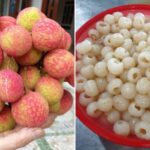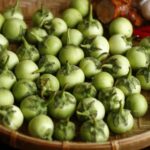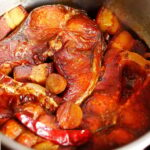The locals carefully select the leaves and young shoots of cassava plants that grow wild along fences and fields, rather than those cultivated for their roots. Traditional wisdom dictates that these wild plants tend to produce tenderer and softer leaves with less latex, resulting in a more flavorful and bitter-free pickled product. Additionally, harvesting the leaves and young shoots does not impact the future development and harvest of the cassava roots.
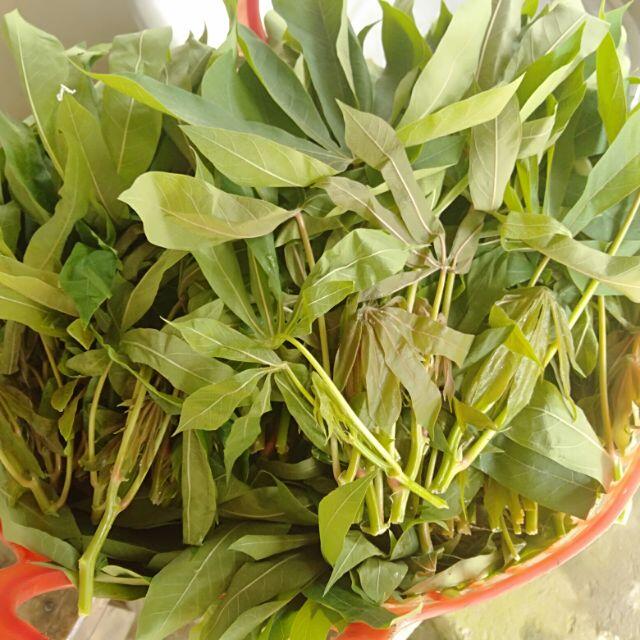
While the process of making pickled cassava leaves is straightforward, it demands attention to detail. Firstly, the leaves are thoroughly washed multiple times to remove any dirt and then soaked in water for 15 to 30 minutes to reduce the latex content. The next crucial step is “vò,” a traditional technique of gently kneading the leaves, which significantly impacts the final taste of the pickle.
During the “vò” process, a gentle touch is essential to soften the leaves while maintaining their original shape, avoiding any bruising. A light sprinkling of salt during this step aids in flavor absorption and accelerates the fermentation process.
The kneaded cassava leaves are then placed in earthenware containers such as jars or pots. A brine solution made with boiled and cooled water (tasted to ensure a mild saltiness) is poured over the leaves until they are fully submerged. A weight is placed on top to keep the leaves from floating, and the container is tightly sealed. The pickle is ready to be consumed after approximately three days.
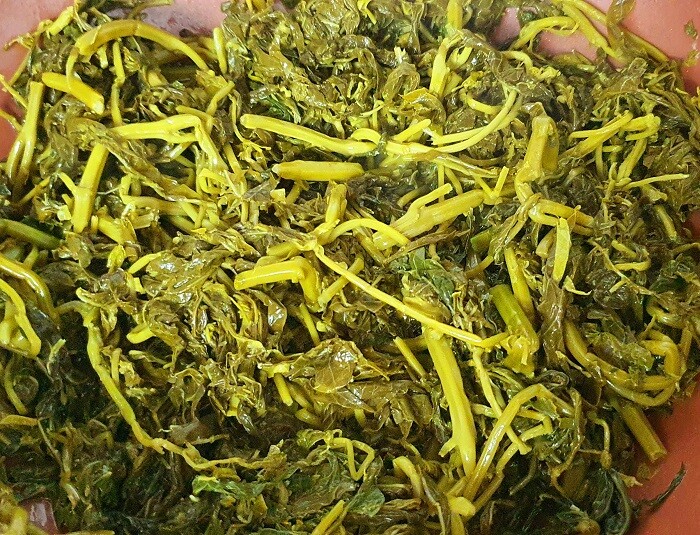
To expedite the pickling process and enhance the flavor, some people expose the container to sunlight during the day and store it in a cool place at night. Once the desired level of sourness is achieved, it is recommended to store the pickle in the refrigerator to prolong its shelf life while maintaining its taste.
Pickled cassava leaves are incredibly versatile and can be used in various dishes. They can be cooked with fish, braised with pork belly, simmered with bones, or simply stewed with crushed peanuts. The refreshing sourness of the pickled leaves complements the richness and nuttiness of the other ingredients, resulting in a rustic yet captivating dish that leaves a lasting impression on anyone who tastes it.
Here is a simple yet delicious recipe for stewed cassava leaves with peanuts. Give it a try!
Ingredients:
– Approximately 1kg of pickled cassava leaves (also known as cassava pickle)
– 300g of raw peanuts
– Seasonings: fish sauce, salt, seasoning powder, cooking oil

Instructions:
Step 1: Prepare the Ingredients
Even though the cassava leaves have been previously pickled, it is advisable to sort through them and remove any older, discolored leaves. Rinse the leaves gently in a basin of water, being careful not to over-wash, as this may dilute the flavor and reduce the natural sourness.
Clean the peanuts by removing any remaining husks and discarding damaged or shriveled nuts. Rinse them briefly to eliminate any dust and then set them aside to dry.
Next, squeeze out excess water from the cassava leaves and place them in a stew pot. Coarsely grind the peanuts with a small amount of water.
Note: Avoid over-grinding the peanuts into a fine powder to retain their natural texture and nutty flavor.
Step 2: Stew the Cassava Leaves with Peanuts
Add the ground peanut mixture on top of the layer of cassava leaves in the pot. Pour in just enough water to cover the ingredients. Adjust the seasoning to your taste, taking into account your family’s preferences.
There is no need to constantly stir the mixture during cooking. The peanuts will naturally settle and blend with the leaves. Simmer over low heat for about an hour and a half until the water has reduced, the leaves are tender, and the flavors have melded. The dish is ready when the peanuts release their nutty aroma.
Final Product:
The stewed cassava leaves with peanuts will have a delightful nutty flavor from the peanuts and a subtle sourness from the pickled leaves. The leaves will be soft and infused with the flavors of the other ingredients. This humble dish is incredibly moreish and perfect for when you want a break from meat-based meals.
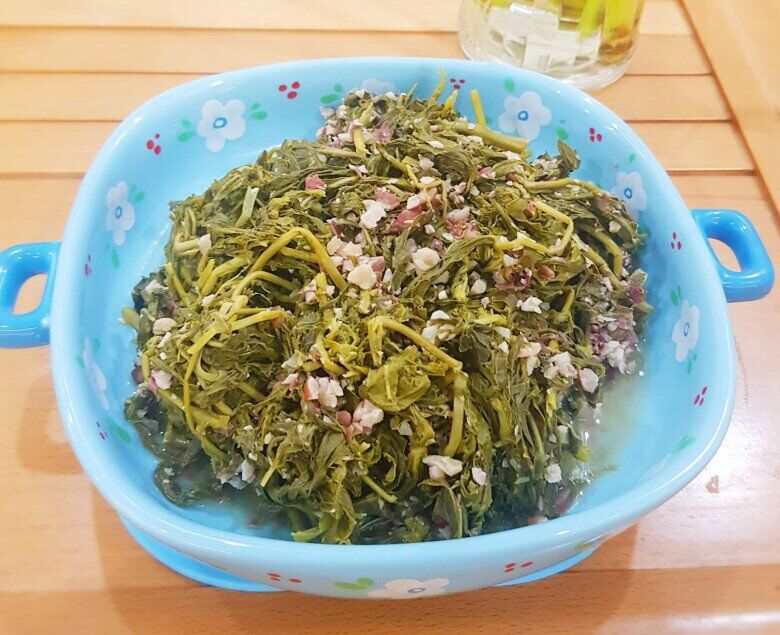
Pickling Season: Learn the 3-Ingredient Method for Delicious, Year-Long Preserved Plums
Natural fermented vinegar is a delicious condiment that can enhance a variety of dishes. With just three simple ingredients, you can easily make your own fabric vinegar at home. Let’s explore this fascinating process and uncover the secrets to creating a tasty, versatile vinegar that will elevate your culinary creations.
The Alluring Appeal of Vietnamese Cuisine: Liu Yifei’s 80 Million View Moment
“Chinese actress Liu Yifei, also known as Fairy Sister, caused a stir on Weibo when she was spotted at a casual Vietnamese restaurant in France, indulging in the famous pho. The rare glimpse into her everyday life delighted fans and once again brought Vietnamese cuisine, especially pho, into the spotlight in China.”

























